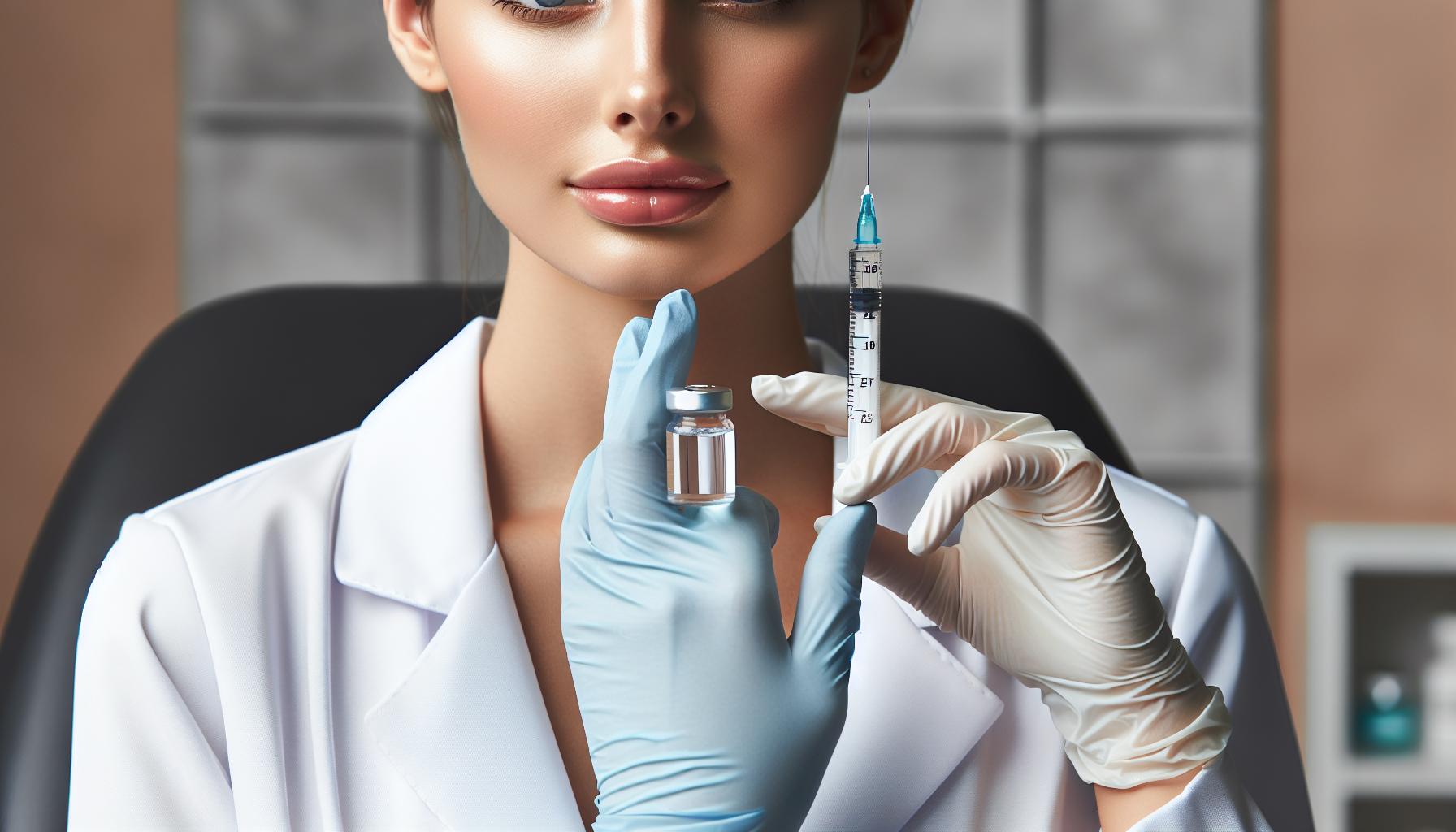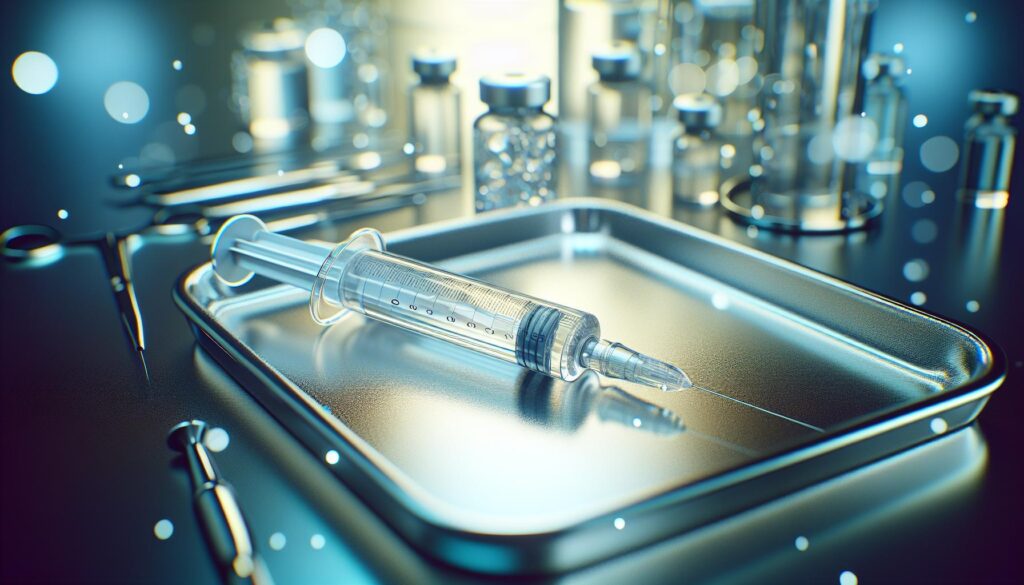When it comes to dermal fillers, one of the most common questions I hear is, “How much filler is in a syringe?” Whether you’re considering a subtle enhancement or a more noticeable transformation, understanding the amount of filler in a syringe is key to setting realistic expectations for your results.
Most syringes used for fillers contain a standardized amount, but the volume can vary depending on the product and its purpose. Knowing how much filler is in a syringe helps you plan your treatment and ensures you’re informed before making any decisions. Let’s break it down so you can feel confident about your next step.
Understanding Dermal Fillers
Dermal fillers enhance and restore volume to specific areas of the face and body. They’re non-surgical treatments designed with precision to address various aesthetic concerns.
What Are Dermal Fillers?
Dermal fillers are injectable gels composed of substances like hyaluronic acid, calcium hydroxylapatite, or poly-L-lactic acid. These materials work beneath the skin’s surface to add volume, smooth wrinkles, or stimulate collagen production. Each filler type targets specific concerns, such as enhancing lip plumpness or addressing deep-set lines.
Common Uses for Dermal Fillers
- Facial volume restoration: Fillers correct volume loss in areas like cheeks or temples.
- Lip enhancement: Products add definition, shape, and fullness to lips.
- Wrinkle smoothing: Commonly used to reduce fine lines near the mouth, nose, or forehead.
- Jawline and chin contouring: Fillers refine jawlines or define chins for improved facial symmetry.
- Hand rejuvenation: Used to plump hands, minimizing visible veins and tendons.
These uses cater to personalization based on individual aesthetic goals.
How Much Filler Is in a Syringe?

Most dermal filler syringes contain a standardized volume, but variations exist depending on the product and its intended purpose. Understanding these quantities helps determine the amount needed for specific cosmetic treatments.
Standard Syringe Volume
A standard dermal filler syringe typically contains 1 milliliter (ml) of product. This volume is equivalent to about one-fifth of a teaspoon. Some specialized syringes may have smaller amounts, such as 0.5 ml, designed for precision treatments in delicate areas like the lips or under the eyes. Brands like Juvederm, Restylane, and Radiesse generally follow these volume standards.
Larger syringes, such as 1.5 to 2 ml, are less common but may be used for areas requiring more substantial volume, like the cheeks or jawline. These higher volumes can minimize the need for multiple syringes during a single session.
Factors That Affect Syringe Quantity
The area treated and the aesthetic goals heavily influence the number of syringes used. Enhancing lips may require 0.5 to 1 ml, while cheek augmentation often needs 1 to 2 ml per side. Larger treatment areas, such as the jawline, may demand additional syringes.
Product characteristics can also determine syringe quantity. Thicker fillers provide more structure and support, making them suitable for deeper injections with fewer syringes, while thinner fillers suit surface-level corrections and may require increased amounts for coverage.
Injector technique varies, too. Some professionals distribute smaller volumes across multiple areas for natural results, while others use higher quantities for dramatic changes.
Comparing Filler Types and Syringe Sizes

Different filler types and syringe sizes cater to varying treatment needs. Each filler type has unique properties, which influence the volume typically provided in a syringe and its intended use.
Hyaluronic Acid Fillers
Hyaluronic acid fillers are the most commonly used fillers in aesthetic treatments. Most syringes for these fillers contain 1 milliliter (ml) of product. Popular brands like Juvederm and Restylane produce syringes in this standard size, but smaller 0.5 ml options are available for more precise applications, such as lip contouring or tear trough correction. These fillers are versatile, offering temporary volume and hydration with results that last 6-18 months depending on the specific product and injection site.
Other Popular Filler Types
Other filler types include calcium hydroxylapatite and poly-L-lactic acid fillers. Calcium hydroxylapatite fillers, such as Radiesse, often come in syringes holding 1.5 ml of product. These are denser and used for deeper corrections, like jawline enhancement or cheek augmentation. Poly-L-lactic acid fillers, like Sculptra, are typically supplied in larger vials rather than individual syringes since they’re diluted before use. This filler works by stimulating collagen production, making it ideal for gradual volume restoration over several sessions.
How Many Syringes Do You Need?

The number of syringes required depends on the treatment area, the desired effect, and the type of filler being used. Understanding these factors helps plan a tailored approach to achieve optimal results.
Variability Based on Treatment Area
Each treatment area needs a specific amount of filler to achieve the desired outcome. For instance:
- Lips: Enhancements typically use 0.5 to 1 ml of filler per session. Subtle volume may need less, while more dramatic changes may require up to 2 ml.
- Nasolabial Folds: Usually corrected with 1 to 2 ml. The depth of the folds and individual anatomy can influence the quantity.
- Cheeks: Contouring or volume restoration commonly requires 1 to 3 ml per cheek. Greater volume loss may need more.
- Jawline and Chin: Enhancing these areas often involves 2 to 4 ml, depending on the structural changes desired.
- Under-Eyes: Tear troughs are delicate and typically use 0.5 to 1 ml for subtle rejuvenation.
More extensive corrections, like full-face treatments, may require several syringes, sometimes exceeding 5 ml.
Consultation for Personalized Needs
A consultation with a qualified injector provides clarity on the quantity of filler needed. During the evaluation, I discuss individual goals, assess facial structure, and suggest a treatment plan. I also consider existing volume, symmetry, and desired longevity. For instance, patients seeking minimal enhancement might use fewer syringes, while those aiming for significant transformations might need multiple sessions.
Tips for Choosing the Right Amount of Filler

Selecting the appropriate amount of filler ensures natural-looking results and balances individual aesthetic goals with facial harmony. Understanding key factors and collaborating with experienced professionals helps achieve the desired outcome effectively.
Working With a Certified Professional
I prioritize consultations with certified professionals to ensure safe and precise filler treatments. Licensed injectors assess facial structure and desired outcomes, recommending the appropriate filler type and amount. They customize treatments to address unique goals, whether enhancing lips, contouring cheeks, or smoothing fine lines. Professionals with proper training reduce risks associated with incorrect filler volume, such as asymmetry or overcorrection.
Verify certifications and review previous patient results before selecting an injector. Professionals specializing in aesthetics often possess advanced training in facial anatomy and use techniques to enhance results while minimizing complications.
Avoiding Overfilling
Using too much filler can lead to unnatural results or excessive swelling. I choose conservative initial volumes, which allow adjustments during follow-up sessions if needed. Certified injectors strategically distribute filler to balance facial symmetry without overloading specific areas. For instance, 0.5 ml increments work well for subtle lip enhancements, while 1-2 ml may better suit cheek contouring.
Focusing on gradual improvements maintains a natural appearance, avoiding the “overdone” look. Overfilling risks include filler migration or irregularities, which certified injectors help avoid by using appropriate techniques for each treatment area.
Conclusion
Understanding how much filler is in a syringe and how it’s used is key to achieving your desired aesthetic results. Every treatment is unique, and the right amount of filler depends on your goals, facial structure, and the expertise of your injector. By working with a qualified professional, you can ensure a personalized approach that enhances your natural beauty while maintaining balance and harmony.
Frequently Asked Questions
What is the standard amount of filler in a syringe?
Most dermal filler syringes contain 1 milliliter (ml) of product, equivalent to about one-fifth of a teaspoon. However, smaller syringes, such as 0.5 ml, may be used for precision treatments, while larger syringes ranging from 1.5 to 2 ml are less common and typically used for areas requiring more volume.
What are dermal fillers made of?
Dermal fillers are injectable gels made from substances like hyaluronic acid, calcium hydroxylapatite, or poly-L-lactic acid. These materials restore volume, smooth wrinkles, and enhance facial features while supporting natural-looking results that align with individual goals.
How many syringes are needed for common treatments?
The number of syringes varies by treatment area. For example, lip enhancements typically require 0.5 to 1 ml, while nasolabial folds often need 1 to 2 ml. Cheek contouring may require 1 to 3 ml per cheek, and full-face corrections may exceed 5 ml for optimal results.
How long do dermal filler results last?
Results depend on the type of filler and treatment area. Hyaluronic acid fillers last 6-18 months, while other fillers, like poly-L-lactic acid, stimulate collagen for prolonged results over several sessions. Consult with your injector for specific expectations.
Can fillers be customized for individual goals?
Yes, fillers allow for personalized treatments based on individual facial structure and aesthetic goals. A qualified injector can recommend appropriate filler types, amounts, and techniques to create natural-looking, harmonious results.
Are there risks of using too much filler?
Yes, overfilling can lead to unnatural results or swelling. It’s important to start with conservative amounts and make adjustments during follow-up sessions to maintain balance and facial harmony while minimizing risks.
What are the uses of dermal fillers?
Dermal fillers enhance facial volume, smooth wrinkles, contour jawlines, augment lips, rejuvenate hands, and more. They are versatile tools for addressing various aesthetic concerns and achieving tailored results.
Why is a consultation important for filler treatments?
A consultation ensures your injector understands your goals, assesses your facial structure, and creates a customized plan. It allows for the appropriate selection of filler types and amounts to achieve safe and desired results.
What should I look for in a qualified injector?
Choose a certified professional with experience in dermal fillers. They should provide a detailed consultation, understand facial anatomy, and have a proven track record of delivering natural, balanced results.
Can results be adjusted after the treatment?
Yes, if you use hyaluronic acid fillers, they can be dissolved using an enzyme called hyaluronidase if adjustments are necessary. For other fillers, adjustments may involve follow-ups or additional sessions to refine results.
